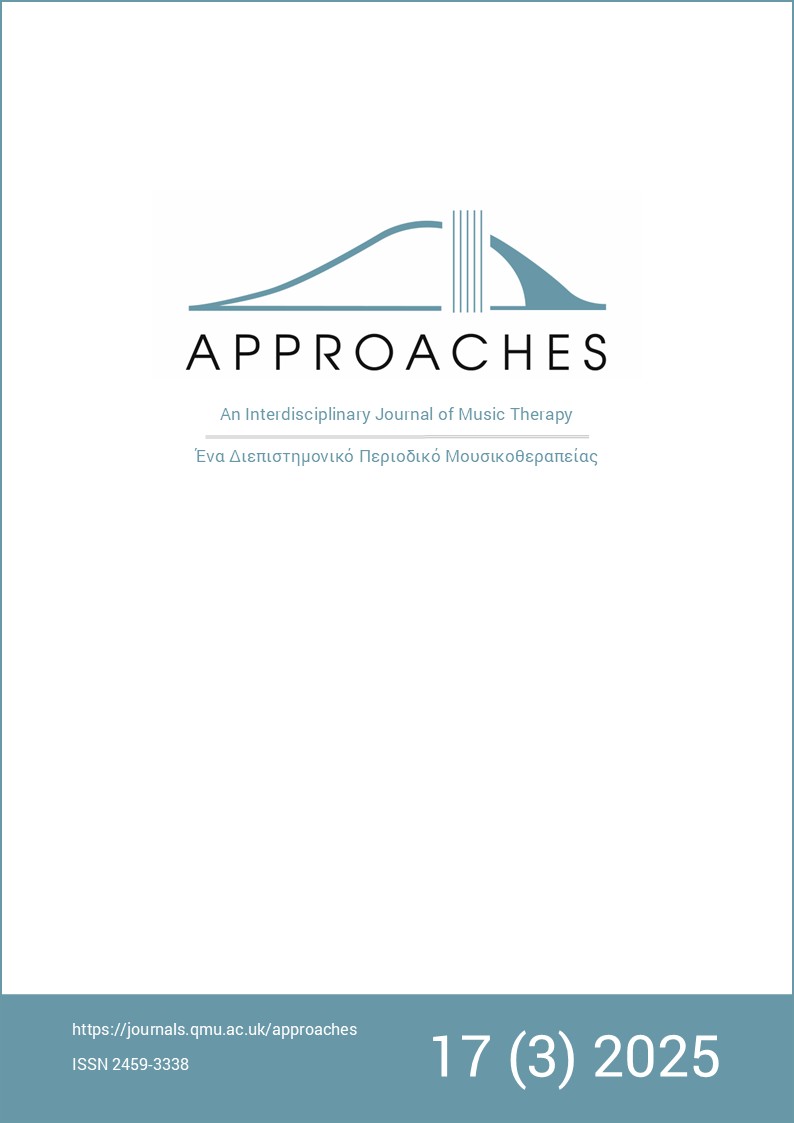Reflecting on the impulse to connect and the role of distinction
DOI:
https://doi.org/10.56883/aijmt.2025.639Abstract
Making meaning of our practice as music therapists is a curious and multi-faceted process. Who we are trying to communicate our ideas to and our motivation for sharing and describing our work can profoundly impact the way we describe therapeutic practices and encounters, shaping the discourse of our field in important ways. With a breadth of influences and intended audiences informing the ideas emerging from our discipline, there is great scope for variety and diversity of thought and action in music therapy. This breadth of perspectives challenges us as a profession to witness and hold space for complexity, which can feel exciting and hopeful, uncertain and unclear, and downright uncomfortable on occasion – as complexity so often does.
As I sat down to write this editorial, I noticed my own intention to find commonalities in the many perspectives on music therapy research and practice presented in this issue of Approaches. I felt my desire to seek a shared theme that would neatly ‘bring together’ the concepts presented the articles; to create a common thread between the authors’ ideas that I could present and discuss cohesively in the shared context of music therapy. It felt natural to seek these connections, and I found some. I identified, for example, the different perspectives on relationships explored theoretically by Hadar in their meta-analysis of dyadic improvisation, practically by Christensen and Gattino in their case study with a boy with Down Syndrome, and professionally by Krüger et al. in their reflection on relationship building with other disciplines during student place-based learning. I also noted a theme around novel practice approaches that encompassed the diverse use of sound and vibration in music therapy by both Gal and Elefant and Leandertz and Ala-Ruona, as well as Avery et al.’s and Knight and Blank’s evaluation of online practices with adolescent and early childhood groups respectively, and Margett’s study of a music therapy consultation model.
It was satisfying to find these connections or ‘themes’, but deeper reflection prompted me to consider the loss of nuance and important novelty – so critical to a healthy discourse – that can occur when grouping papers in this way. Each of these papers has a unique positioning of ideas that is a novel contribution to our field, and each respond to a different question or perceived knowledge ‘gap’. Finding links that represent common foundations can be a satisfying way to demonstrate cohesion or clarity within our profession, but it is the new ideas that push at the edges, reframe, and sit outside the shared foundations of music therapy that continue to drive our discipline forward. I invite you all to read this issue of Approaches with an eye out for not only the ideas that resonate, but for the ideas that push at the edges of your thinking as well. Our move at Approaches towards a rolling model of publication in 2026 aligns with the notion of approaching each new article as a discrete and novel offering. I hope you enjoy this upcoming transition and the opportunities it presents for discrete and timely access to new knowledge and ideas.
Downloads
Published
Issue
Section
License
Copyright (c) 2025 Lucy Bolger

This work is licensed under a Creative Commons Attribution-NonCommercial-NoDerivatives 4.0 International License.




